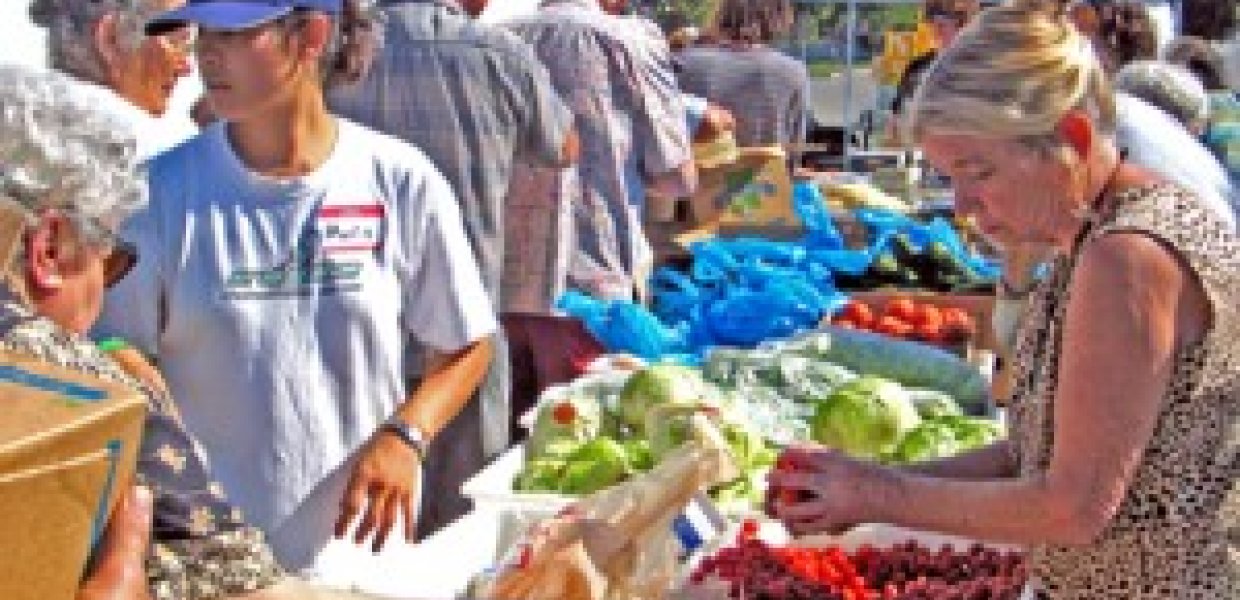Online food and wine magazine Zester Daily published a story on the decades-long work that communication professor Peter Clarke and research scientist Susan Evans have been conducting on food banks and public health. Since 1991, the team has spearheaded a movement for the 200-plus food banks across the country to provide their clients fresh produce, a healthier alternative to the traditional canned goods and cereal offered by food shelters. By pairing food banks with overstocked produce distributors, Clarke and Evans have saved excess fruits and vegetables from disposal and provided low-income families with healthy meal choices. Largely due to their work, more than 400 million pounds of fresh produce is annually distributed by food banks in 47 states. The USC Annenberg team is now expanding their operations with the assistance of Seattle chef Maxime Bilet. Bilet, co-creator of the cookbook Modernist Cuisine, is preparing recipes using only materials provided by the food banks. The goal is to create tasty and healthy meals that cater to the time and financial restraints of low-income families. "Time and resources are big barriers to healthy eating," the article read. "Many of the people dependent on pantries are seniors or the working poor, who are juggling a couple of part-time jobs while raising children. They often suffer from diabetes or other chronic diseases. A growing number are Latino and Asian immigrants who aren’t familiar with the vegetables eaten in the United States. And their kitchens aren’t likely to be stocked with sharp knives, food processors or expensive spices." Bilet's work will be incorporated into QUICK! Help for Meals, a computer program created by Clarke and Evans that provides food pantry customers with recipes centered upon fresh produce. The recipes, provided in both English and Spanish, are customized to accommodate the specific taste preferences, portion sizes and dietary needs of the individual. "Clarke and Evans scoured cookbooks and the Internet to build a recipe list based around the vegetables most commonly found in food banks: zucchini, broccoli, green beans, carrots, potatoes, sweet potatoes, onions, root vegetables and cabbage," the article read. The duo also enlisted the help of a number of food experts, including Brian Wasnick of Cornell University and Lachlan Sands of the Le Cordon Bleu College of Culinary Arts in Los Angeles. Wasnick, a food psychologist, "taught them about the hidden things that influence people’s food choices," such as labeling items with positive buzzwords like "Grandma's oatmeal cookies." Sands and his students studied hundreds of recipes to ensure the dishes had maximum amounts of flavor and nutritional value. Bilet has focused upon developing recipes specifically catered to children. According to the chef, one of his greatest challenges was "making a head of cabbage awesome to a kid who’s accustomed to eating Big Macs." The solution, he said, is to roast: "Kids prefer the softer textures with vegetables and they love that roasted flavor." Clarke and Evans are currently working to make a smartphone application for QUICK! Help for Meals, something they hope will make the recipes even more accessible and "easier for the pantries to administer." Read the story here. More on the operation. Peter Clarke.
USC Annenberg team highlighted for bringing fresh produce to food banks
December 4, 2012
Updated May 3, 2023 11:46 p.m.



